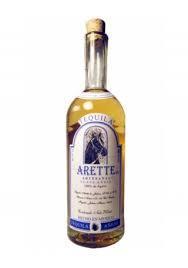Review of Dalton Alma GSM 2012 and Arette Artesanal Suave Blanco Tequila.
By Joshua E. London and Lou Marmon
Washington Jewish Week May 14, 2015

The “Old world” has many; the “New World” has few.
These “Old World” wine regulations cover every aspect of viticulture, including what grapes can be grown where, and in some instances mandating minimum ripeness, maximum grape yield per acre, alcohol range, permitted blends, use of additives, harvest times, aging techniques, and labeling. These rules, at least in principal, simply codify practices that have become hallowed by time. The goal is to maintain quality, prevent over-production, match grape varietals to terroir, and protect the integrity and reputation of the different winegrowing regions.
“New World” winemakers are typically subject to a smaller set of rules, and the resulting creative freedom has produced some intriguing grape varietal marriages, and led to sometimes brilliant, unusual, – and occasionally terrible – grape varietal to terroir cultivation’ decisions. This freedom can lead to unusual blends, but more often than not “New World” producers are looking to the “Old World” for direction or inspiration. So sometimes “New World” blends are identical to those found in Europe, but will obviously taste different because the grapes are grown in distinctively non-European terroirs.
Israel offers an interesting case in point. There are many different micro-climates in Israel that are being utilized for grape cultivation, with some relatively older and slightly better understood than others. This better understanding has allowed for slightly more self-assured and better informed experimentation.
One of the latest trends has been a greater willingness by some Israeli grape growers and wine producers to get away from the default Cabernet Sauvignon and Merlot and to consider other classic “Old World” grape varietals that might be better suited to Israel’s terroir and generally very warm climate. For example, the climate of France’s Rhône Valley is more similar to Israel than Bordeaux, so Rhône grape varietals have entered the general mix a bit.
A very good example is the aromatic Dalton Alma Grenache, Syrah and Mourvedre (GSM) 2012 ($30) that opens with mocha and earthy red fruit aromas which lead into supple, mildly spicy dark fruit flavors intermingled with anise, vanilla, pepper and tobacco.
Spirits-wise, we recently had occasion to once again think about tequila (this actually had nothing at all to do with “Cinco de Mayo”). Tequila is a type of mezcal made from a fermented mash of the pinas, or hearts, of the Agave Azul Tequilana Weber species of the agave plant. Unlike other mescals, tequila can only be made from Azul (Spanish for “blue”) agave harvested in designated regions in the Mexican state of Jalisco and limited regions in the states of Guanajuato, Michoacan, Nayarit, and Tamaulipas; in Jalisco, production is centered in a few communities near Guadalajara — the original and most famous of which is the town Tequila.
Tequila comes in various styles, the distinctions between which have to do with ageing: blanco (“white”) or plata (“silver”), which is unaged white spirit; Joven (“young”) or oro (“gold”), which is silver/white tequila adulterated with flavorings or colorants, or even aged tequilas, to create a more flavorful product; reposado (“rested”) which has been aged at least two months, but less than 12, in oak barrel; Añejo (“aged”), which has been aged 1-3 years in oak; and Extra Añejo (“extra aged”), which has been aged at least three years in oak (this category was only established in 2006).
Outside of Mexico, most kashrus authorities presume Oro is problematic and require certification. As Mexican regulations are neither very strict nor reliably enforced where beverage adulteration is concerned, however, a growing number of kashrus agencies require all tequilas to be certified kosher — except for blanco tequila. These are uniformly considered kosher without certification. All tequila requires appropriate kosher certification to be reliably used during Passover.
One of our favorite blanco tequilas, and there are many we like, is the relatively expensive Arette Artesanal Suave Blanco Tequila ($50; 40 percent ABV): made in small batches from only the heart of the spirit run, this sophisticated tequila offers robust, bright aromas of floral agave, white pepper, herbs and fresh citrus peel, and an elegant, complex, and zesty palate of pure agave with a kick of peppercorn, lemon, honey and a touch of black licorice, and a long, lovely finish. Delicioso. L’Chaim!
